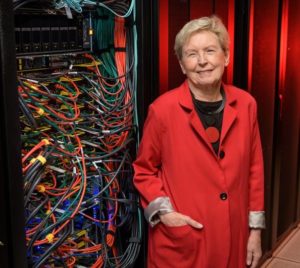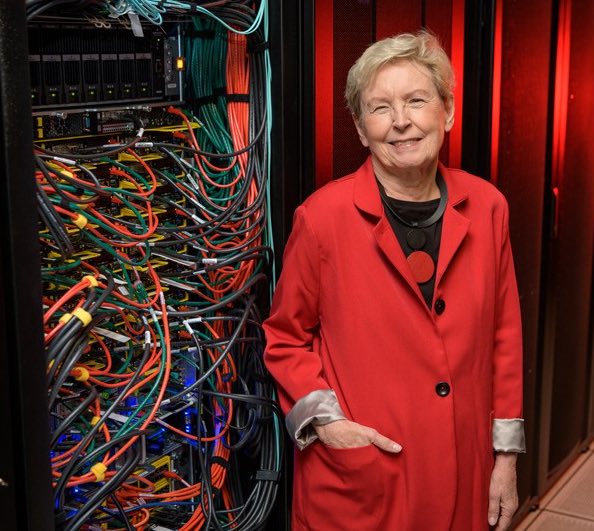
Jane Caviness, director of the University of Delaware’s Academic Computing Services in the 1980s and who later oversaw the implementation of the NSF Network (NSFNET) backbone.
Penguin Computing has deployed a new HPC cluster at the University of Delaware. The Caviness cluster is named in honor of Jane Caviness, former director of Academic Computing Services at the University.
It is great to have our new cluster be named after Jane Caviness, who has played a very important role in establishing high performance computing at University of Delaware,” said Arthi Jayaraman, an investor in both the Farber and Caviness clusters and associate professor of chemical and biomolecular engineering and materials science. “Through her achievements in the computing field, both at UD and the National Science Foundation, she is a fantastic role model for all students at UD who aspire to be impactful computer scientists. Additionally, naming this cluster after an outstanding female computer scientist serves as a good reminder to all students that there are outstanding female role models in the field of computing, where most popular known leaders have been men.”
In the 1980s, Jane Caviness led a ground-breaking expansion of UD’s computing resources and network infrastructure that laid the foundation for UD’s current research computing capabilities. After leaving UD, Caviness went to the National Science Foundation (NSF) as program director for NSFNET in the newly formed Division of Networking and Communications Research and Infrastructure, later serving as deputy division director. She oversaw the implementation of the NSFNET’s initial backbone and the expansion of network connectivity between colleges, universities, NSF supercomputer centers, and other research centers. Caviness’ activity in the Association for Computing Machinery (ACM) and EDUCOM, including a term as vice-president for Networking at EDUCOM, highlight how strong an advocate she has been for cooperation and collaboration in the research computing community.
To design the Caviness system, the University gathered input from faculty like Sunita Chandrasekaran, whose HPC expertise was instrumental in the selection of GPUs for the cluster.
These GPUs enable new possibilities and scientific advances in the area of high performance computing and deep learning,” Chandrasekaran said, referring to a branch of artificial intelligence. “The Caviness cluster is a very timely installation as most of the computing systems in research centers across the world are increasingly using CPUs and accelerators, most often being GPUs.”





